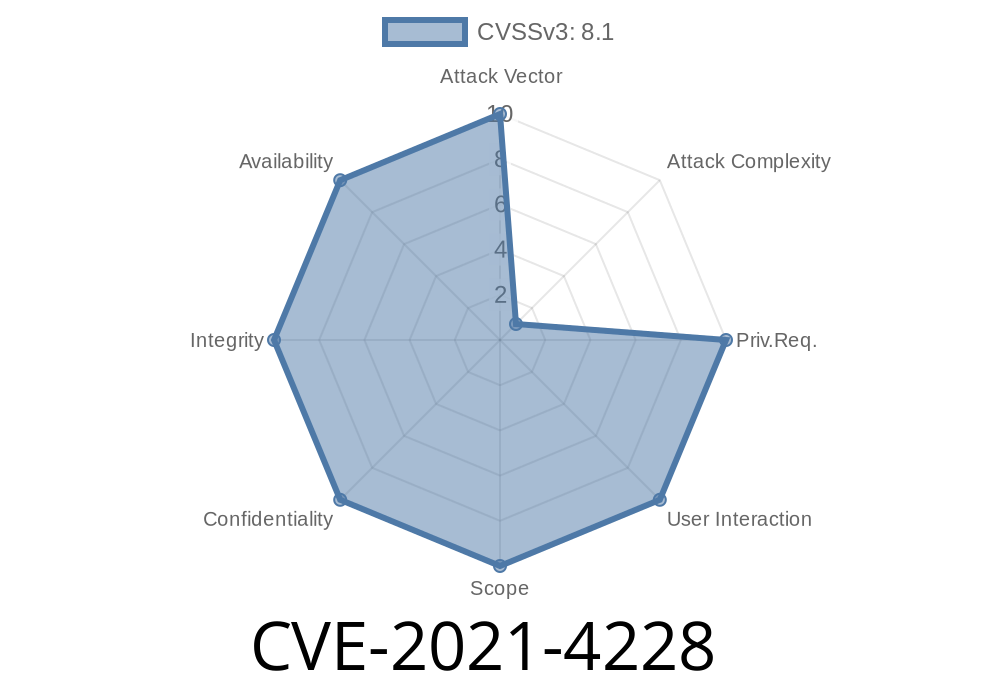A critical security vulnerability (CVE-2021-4228) has been identified in Lanner Inc's IAC-AST250A standard firmware version 1.00.. This vulnerability is caused by the use of a hard-coded Transport Layer Security (TLS) certificate by default, which potentially allows an attacker to perform Man-in-the-Middle (MitM) attacks even in the presence of an HTTPS connection.
In this long-read post, we will dive into the details of this vulnerability, explain how it can be exploited, provide code snippets, and link to original references illustrating the impact of this issue on the affected systems.
Vulnerability Details
The IAC-AST250A standard firmware version 1.00. is affected by a vulnerability caused by the use of default, hard-coded TLS certificates for HTTPS connections. These certificates are used to secure communications between clients and servers over a computer network.
The use of a hard-coded TLS certificate means that all devices running the affected firmware are issued with the same certificate, which could allow potential attackers to conduct MitM attacks by intercepting and altering data exchanged between clients and servers. This could result in the disclosure of sensitive data, unauthorized access to the affected device, and other malicious activities.
Exploit
To exploit this vulnerability, an attacker would first need to gain access to the hard-coded TLS certificate. These certificates are typically stored in the device's firmware and can often be extracted using reverse engineering techniques and tools such as Binwalk, Firmware Analysis Toolkit (FAT), or others.
Once the attacker has obtained the certificate, they could then use it to establish a rogue access point impersonating the legitimate server. Consequently, the attacker can intercept and manipulate HTTPS connections established between the targeted device and its clients.
The following code snippet is a proof-of-concept (PoC) demonstrating how an attacker could leverage the vulnerability to conduct MitM attacks:
# Import libraries
from mitmproxy import http
# Setup the rouge access point with the extracted hard-coded TLS certificate
def setup_rogue_access_point():
# Add the extracted TLS certificate
tls_cert = "..."
# Configure the rouge access point parameters
access_point_config = {
"tls_certificate": tls_cert
}
# Start the rouge access point
start_access_point(access_point_config)
# Intercept HTTPS requests and responses
def request(flow: http.HTTPFlow):
setup_rogue_access_point()
# Access the intercepted request and modify it as needed
intercepted_request = flow.request
# Access the intercepted response and modify it as needed
intercepted_response = flow.response
# Perform malicious actions on the intercepted data
perform_malicious_actions(intercepted_request, intercepted_response)
References
The vulnerability was discovered by a security researcher, who responsibly disclosed the issue to Lanner Inc. The company acknowledged the issue and released a security advisory, which can be accessed here:
- Lanner Security Advisory: https://www.lanner-america.com/security-advisory/CVE-2021-4228/
Mitigation and Recommendations
To address this vulnerability, users and administrators of affected IAC-AST250A devices should implement the following steps:
Update the firmware to the latest version provided by Lanner Inc.
2. Replace the default hard-coded TLS certificate with a unique certificate issued by a trusted Certificate Authority (CA).
Conclusion
The CVE-2021-4228 vulnerability in Lanner Inc's IAC-AST250A standard firmware version 1.00. poses a significant risk to affected devices. Users and administrators should apply the recommended mitigations and follow best practices to ensure the security of their devices and networks.
Timeline
Published on: 10/24/2022 14:15:00 UTC
Last modified on: 10/24/2022 17:01:00 UTC
